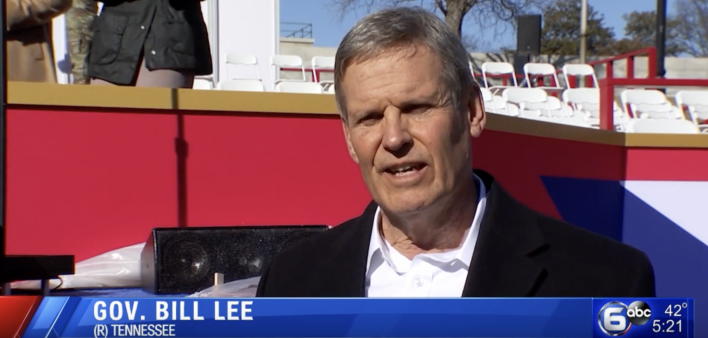Tennessee’s Republican leadership announced that the state’s health department will turn down free federal funding to help prevent HIV, reported The Commercial Appeal last week in a story that’s receiving national attention and fueling concerns about public health.
“Restricting access to HIV prevention and testing could lead to increased rates of HIV infection, greater health care expenses and sicker communities,” noted amfAR, The Foundation for AIDS Research in a statement urging the Tennessee Department of Health to reconsider its decision.
HIV and other health experts also expressed concerns that other conservative states may also reject tens of millions of dollars in federal HIV funds. In Tennessee’s case, the money was available through grants from the Ending the HIV Epidemic (EHE) in the United States initiative, which was launched by President Trump and the Centers for Disease Control and Prevention (CDC). Such funding is channeled through the Tennessee Department of Health and distributed to nonprofits that provide HIV prevention, testing, treatment and other services.
The CDC provides as much as $10 million to Tennessee for HIV programs, Greg Millett the director of public policy for amfAR, told NBC news. It is unclear how much funding will be rejected this year. Calling the decision by Tennessee’s officials “devastating,” Millett added that “if other states follow suit, we’re going to be in trouble.”
Advocates and Democratic lawmakers argue that Tennessee’s decision is based on politics, not science. That’s because some federal funding goes to HIV programs at Planned Parenthood, which provides a variety of sexual health services, including abortions, which many conversative leaders oppose.
View this post on Instagram
Nonprofit groups in Tennessee that receive federal HIV grants were notified that the funding would end May 31 and that the state health department “will utilize other state initiatives to support all HIV prevention and surveillance staff and activities in funded metro health departments, and those contracts will be in place by June 1, 2023,” reported The Commercial Appeal.
“It’s important that [HIV funding is] spent effectively and efficiently in ways that best serve Tennesseans,” explained Republican Governor Bill Lee to the (you can watch the segment at the top of this article). “We think that we can do that better than the strings attached to the federal dollars that came our way, and that’s why we made that decision.”
“We want our Tennessee Department of Health to reconsider this decision,” countered state Senator London Lamar (D–Memphis). “This is free money from the federal government that is being passed through the department. It’s not like the state is putting any money into this fund in the first place.”
As NBC reports, about 20,000 people are estimated to be living with HIV in Tennessee. “I can’t understand why the state would give back funds targeted toward health care,” Diane Duke, president and CEO of Friends for Life, a Memphis HIV service provider, told NBC. “It’s outrageous.” Friends for Life is one of the organizations that received notice that its federal funding would end.
Ending federal grants to prevent HIV goes against the Ending the HIV Epidemic initiative. Launched in 2019, the plan aims to lower new HIV rates by 75% by 2025 and by 90% by 2030. The strategy for reaching these benchmarks involves investing federal funding and resources in programs such as Rapid Start and PrEP (pre-exposure prophylaxis) in 57 key jurisdictions. These are the 48 counties nationwide plus Washington, DC; San Juan, Puerto Rico; and seven rural states with high HIV burdens (Alabama, Arkansas, Kentucky, Mississippi, Missouri, Oklahoma and South Carolina) that together account for 50% of new HIV cases.
Memphis is located in Shelby County, which has one of the nation’s highest HIV rates—819 per 100,000 Shelby County residents were living with HIV in 2020, according to the CDC. As such, Shelby County is designated as one of the key jurisdictions to receive federal funds to help end the HIV epidemic in the United States.
To learn more about the federal initiative, read an overview at HIV.gov and visit the official web page at HRSA.org. For a related POZ article, see “Plans to End the HIV Epidemic at Home and Abroad.”
Similarly, the National HIV/AIDS Strategy, recently updated for 2022 to 2025, also aims to reduce new HIV infections by 75% by 2025 and by 90% by 2030 but lays out different objectives and strategies for reaching those targets. To learn more, see “What’s New in the Updated National HIV/AIDS Strategy?”







Comments
Comments